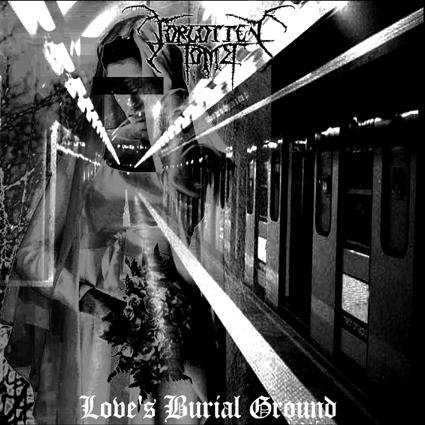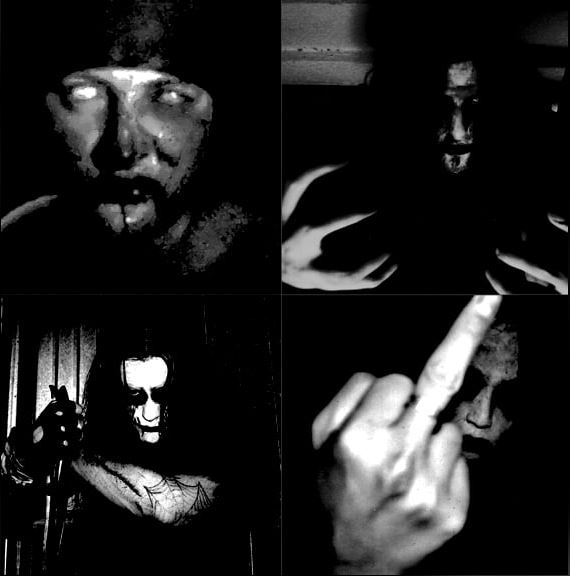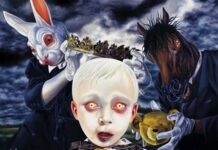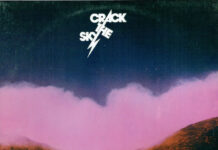FORGOTTEN TOMB’s third offering, “Love’s Burial Ground,” was released on October 18th, 2004, via Adipocere Records. Like its predecessors “Songs to Leave” (2002) and “Springtime Depression” (2003), “Love’s Burial Ground” played a crucial role in defining the features of the subgenre eventually labeled as depressive suicidal black metal (DSBM), of which the Italian four-piece are considered the undisputed forefathers. Moreover, it is likely to be regarded as the closing chapter of a trilogy, making it, in my opinion, one of the most extreme albums ever conceived, both musically and lyrically.


As explicit and evocative as it may be, the title does not “say it all”: this album is not just about a breakup. It deals with a significant number of emotions and events, tied together by an extreme approach to life itself, with negativity as a common thread and an ultimate goal. This theme is clearly reflected in both of its artworks: the original cover [left album cover, Ed. note] was considered too disturbing by the label back then, as it could have impacted sales, but it was chosen for the 2015 reissue via Agonia Records, retitled “III: Love’s Burial Ground.” The cover used in 2004 [right album cover, Ed. note] is no less unsettling, depicting a grieving bride in a subway station, linked to urban desolation—one of the album’s main themes.
“Love’s Burial Ground” marks the band’s evolution into a full lineup, with guitarist Razor SK, bassist Algol, and drummer Asher joining the band. The bass lines were recorded by the band’s founder, guitarist, singer, and songwriter Herr Morbid for logistical reasons, but this lineup remained stable for at least seven years. The album consists of three ambient/industrial movements (“Malus Vivendi” Part I, II, and III) provided by Nordvargr, mastermind of Swedish industrial combo MZ.412, five new tracks, and “Forgotten Tomb MMIII,” a re-recording of “Forgotten Tomb,” originally released on the band’s demo “Obscura Arcana Mortis” (2000).
The opening tune, “Malus Vivendi pt. I – Intro,” sounds like it comes straight from a sleep paralysis episode, as if you can hear your demons marching and approaching from a distance, with nowhere to hide. This is, to some extent, what the album is about: excruciating pain as an unavoidable condition, and glorifying negativity in all its shades and shapes by putting some extreme and over-the-top life choices into practice. An overall misanthropic view of humanity is detectable here and there in the lyrics: “Without identity- A worthless subhuman being / Another waste to increase your sickening race / I’m just waiting for the punishment due / I’m just waiting to piss on your desecrated tomb” is just one example of how wide the interpretation of buried “love” in the album title can be, here to be considered as any form of empathy and mutual connection between humans.
The eerie guitar intro on “Kill Life” leads the listener into a maze of nightmarish visions. “I injure myself searching for a way out / In my eyes you see the horror of being alive,” HM‘s tormented chant always goes straight to the point and, whether you relate to it or not, it hits hard exactly where it hurts the most. The track blends several typical black metal elements into the band’s trademark sound, featuring a slower tempo in the central part and a melodic yet glacial approach in the guitar work.
The third track, “Alone,” is one of FORGOTTEN TOMB‘s most famous songs, and it is no surprise. It was also included in a medley released in 2009 that they keep on playing live nowadays, and it conveys the main topics of the album in such an effective way that I cannot help but praise it. The utter sense of hopelessness is touchable. As detailed and descriptive as the lyrics can be, the music alone says it all. It sounds like indulging in your own suffering with no intention or tools to get rid of it, which is basically what the complete loss of hope feels like, especially in its most acute stage, no matter what specific kind of loss we are talking about. The iconic riff around minute 4:50 will always be, in my book, the finest and purest expression of gut-wrenching desperation turned into music and, as of the lyrics, HM’s skills in keeping it simple without unnecessary and bombastic metaphors was already noticeable back then (he was in his early twenties, but I have always considered him as a so-called old soul, based on the depths of his worldview). Closing the song with that peremptory line “Where have you gone when I needed you? Never again,” after a 12-minute journey in the deepest crevices of despair, feels oddly comforting, but in the end, there is absolutely no light in sight.
The eerie piano sound on “House of Nostalgia” introduces one of the most significant songs ever composed in the history of DSBM, and I take full responsibility for such a statement. Co-written with guitarist Razor SK, its haunting and grim atmosphere perfectly represents the place it talks about: an abandoned house in the countryside HM used to visit at night, also depicted in the “Songs to Leave” booklet in the reissues by Agonia Records. In my own interpretation, the juxtaposition of two strong concepts such as a house, also in its meaning of home as a metaphor for safety and protection, and nostalgia, that weird feeling of emptiness and absence, gives an unmistakably classy narrative frame to the whole thing. On a side note, HM declares that, while recording that tune, he purposely strangled himself with the microphone’s cable, which is clearly audible around the 7:33 mark. Every detail on the album seems to stem from real-life experiences, the good and the bad, giving an authentic and deeply felt piece of art.
“Malus Vivendi Pt. II – Intermezzo” serves to mark the transition between the first and second halves of the album, followed by the title track. A shameless love for the Scandinavian black metal scene is detectable from the very beginning, blended again with that personal touch that made FORGOTTEN TOMB the masters of a subgenre. They make misanthropy sound incredibly charming, and such an album is a full-fledged monument to an irreversible feeling of despise towards humanity.
“Slave to Negativity” features Razor SK as a co-author and presents lyrics reminiscent of a unique prayer, an act of pure devotion to negativity, almost as if it were an otherworldly entity. The music at times sounds soothing, contrasting sharply with the intense, rageful vocals. The bass plays a crucial role throughout the album, but here, it feels particularly prominent, guiding the song’s flow. The variations and dark mood of “Slave to Negativity” make it one of the most significant tracks on the album, as challenging as it can be to pick just one or two highlights. The second-to-last track “Forgotten Tomb MMIII,” as stated before, is a re-recording of an old song originally released on the band’s demo. It has been reshaped to align with the band’s style at the time while maintaining its aggressive vibe.
In conclusion, the outro “Malus Vivendi pt. III – Outro” delivers an extra dose of discomfort, just in case the entire listening experience hasn’t made the listener’s life miserable enough. I vividly remember the first time I heard the album; I played it on repeat about four or five times in a row. It’s fascinating how music can give sound and shape to hidden feelings and emotions that somehow remain unchanged over the years. I could say that “Love’s Burial Ground,” as the closure of both a trilogy and an era, is like a box full of memories that you open at your own risk; sometimes, it’s worth letting yourself drown in such an overwhelming sea of despair.

Written by Licia Mapelli
Tracklist
- Malus Vivendi pt. I – Intro
- Kill Life
- Alone
- House of Nostalgia
- Malus Vivendi pt. II – Intermezzo
- Love’s Burial Ground
- Slave to Negativity
- Forgotten Tomb MMIII
- Malus Vivendi pt. III – Outro
Lineup
Herr Morbid – vocals, guitars, bass
Razor SK – guitars
Asher – drums
Label
Adipocere Records





